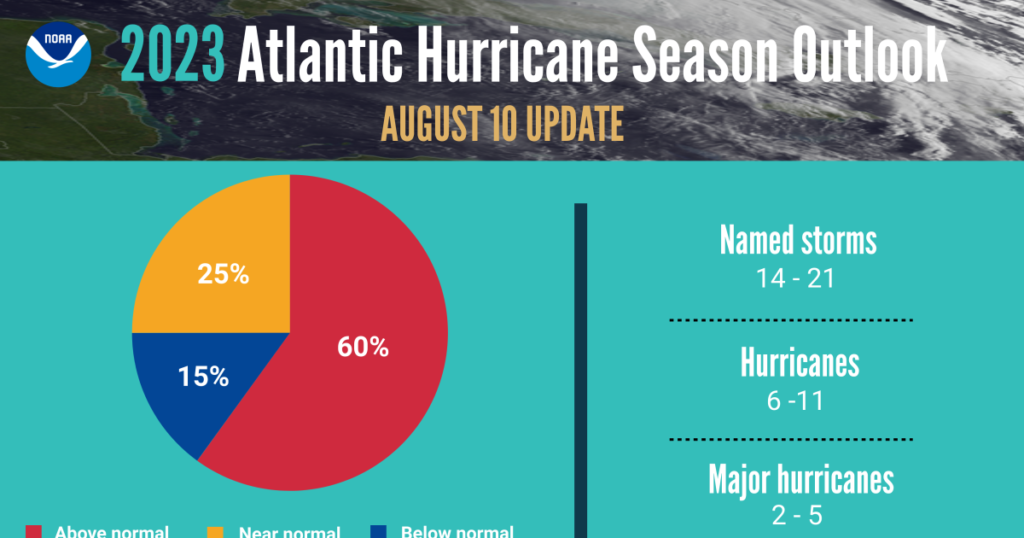Atlantic hurricane season predicted to see above average storm activity

NOAA forecasters on Thursday increased their outlook for an above-normal hurricane season to 60%, up from 30% in May, when they predicted a near-normal hurricane season.
The likelihood of near-normal activity fell to 25% from 40% in May. The update now predicts a 15% chance of seeing a below-normal season.
“Forecasters believe that current ocean and atmospheric conditions, such as record-warm Atlantic sea surface temperatures, are likely to counterbalance the usually limiting atmospheric conditions associated with the ongoing El Nino event,” NOAA said in a statement.
The hurricane season covers six months, ending on Nov. 30
NOAA’s update is calling for 14 to 21 named storms, which have winds of 39 miles per hour or greater, of which six to 11 could become hurricanes, with winds of 74 mph or greater. Of those hurricanes, two to five could become major hurricanes, with winds of 111 mph or greater.
NOAA provides these ranges with 70% confidence. These updated ranges include the five storms that have already formed this season.
“The main climate factors expected to influence the 2023 Atlantic hurricane activity are the ongoing El Nino and the warm phase of the Atlantic Multi-Decadal Oscillation, including record-warm Atlantic sea surface temperatures,” said Matthew Rosencrans, NOAA’s lead hurricane season forecaster.
“Considering those factors, the updated outlook calls for more activity, so we urge everyone to prepare now for the continuing season,” he said.
The Atlantic has had an active start to the hurricane season, with five storms that have reached at least tropical storm strength, including one hurricane. According to the NOAA, an average hurricane season produces 14 named storms, of which seven become hurricanes, including three major hurricanes.
Last year, Hurricane Ian hit the Southeast region, causing major damage and loss of life in Florida.
Florida officials reported 130 deaths in the state. RMS, a risk modeling and solutions firm estimated total private market insured losses from Hurricane Ian to be between $53 billion and $74 billion, with a best estimate of $67 billion.







